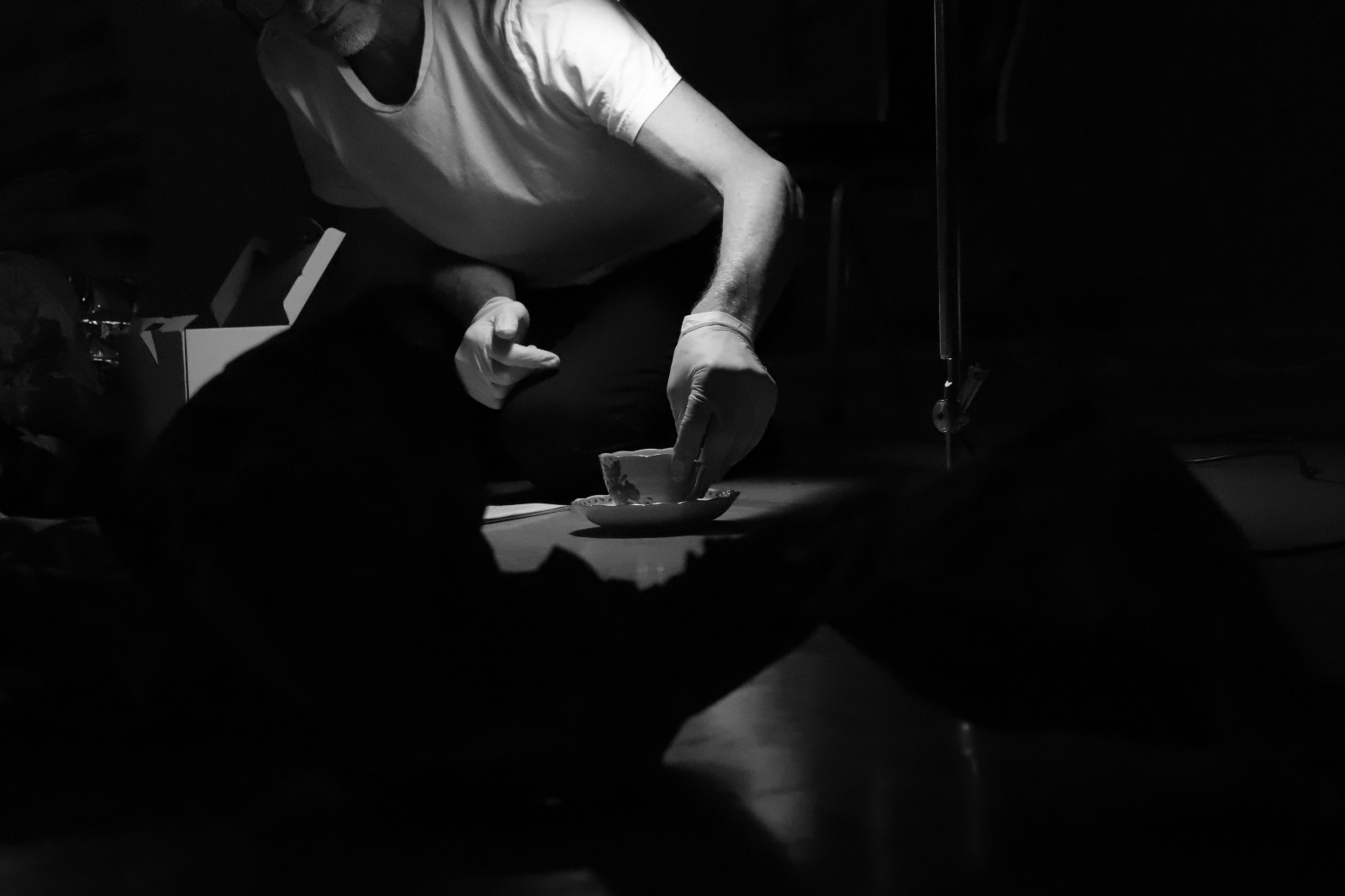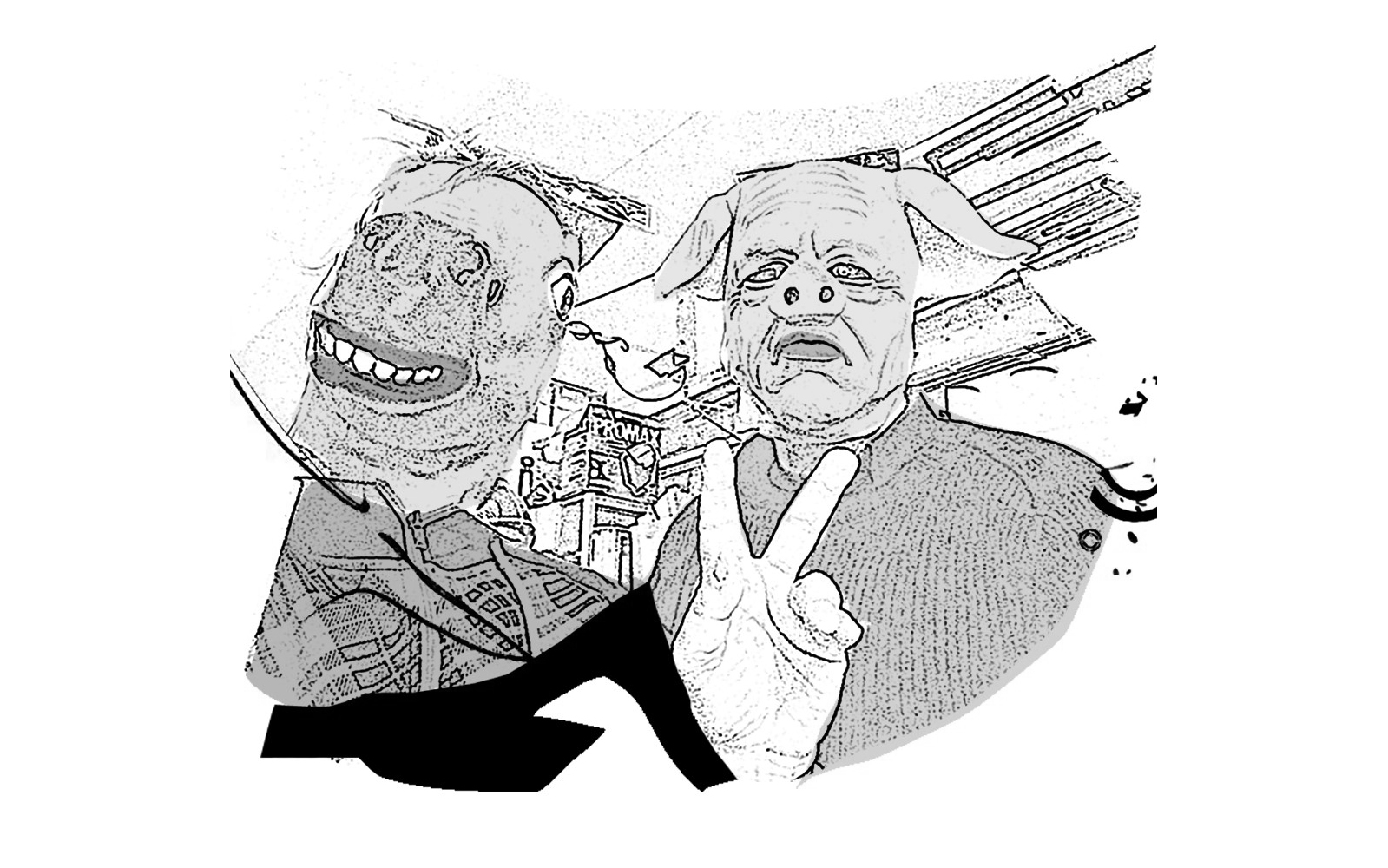Our exposition comes out of a conversation and explorative research process about the performative potential of archives, both publicly and personally, shaped by four different artistic mediums and practices in film, performance art, choreography and essay writing. The shared medium has been through the use of text and online communication. The research was developed through ongoing monthly meetings and notes that were taken since April 2019. From those meetings, we laid a structure where we each created our parts of what became the score for "Living and Lasting", which we first performed in Oslo and then in Berlin in 2022*. This score is the pivot point of our exposition. Our working process includes considerable elements of risk and surprise by alternating between collaborative meetings and individual work. The first time we perform a new piece none of us know exactly what or how the others will present. Along with the audience, we experience portions of the text, movements, and media put together for the first time, without knowing whether the whole thing will coalesce, diverge, or fall apart.
(*) In Oslo at the 2022 Nordic Summer University (NSU) and in Berlin at the symposium “Who tells y/our story?” by the artistic research project MEMORYWORK (2021-2024).
Biography
Luisa Greenfield is a Berlin-based visual artist working predominantly with analog film and essay writing. She holds a Ph.D. in Art and Media from the University of Plymouth, UK. Her current work comes from a close study of Danièle Huillet and Jean-Marie Straub’s 1972 film Geschichtsunterricht (History Lessons). She is an active member of the LaborBerlin analog film collective and is co-editor of the book, Film in the Present Tense (Berlin: Archive Books, 2020).
Camilla Graff Junior works, as a performance artist and curator, situated in the intersections between visual art, creative writing, narrative, feminist theory, archive and affect. In her current research project, she uses an auto-ethnographic approach as a method to look at performance as a tool to investigate social practices as they affect and reflect a woman's life. She has over the last thirty years conceived solo and collaborative works performed and received in residency in Europe, Africa, South America and the United States.
Per Roar works as a choreographer, performer, and artist-researcher. Drawing on his interdisciplinary background and concern for socio-political matters, he combines strategies from social research with somatic approaches to choreography, as in his doctorate Docudancing Griefscapes (2015) from the UniArtsHelsinki. He is a professor in choreography at Oslo National Academy of the Arts (KHIO) and currently co-leading MEMORYWORK (2021-2024), an artistic research enquiry into the politics of remembrance and representation.
Myna Trustram worked in England for many years as a historian, museum curator and academic. In 2021 she stopped paid work and now works as a writer, mostly of short experimental essays in which she calls upon literary and academic forms to consider themes such as mourning, childhood, separation and emptiness.




